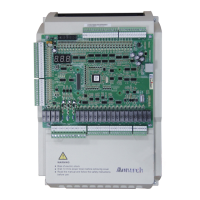- 192 -
Chapter 9 EMC
9.1 Denition of Terms
1. EMC
Electromagnetic compatibility (EMC) describes the ability of electronic and electrical
devices or systems to work properly in the electromagnetic environment and not to
generate electromagnetic interference that inuences other local devices or systems.
In other words, EMC includes two aspects: The electromagnetic interference generated
by a device or system must be restricted within a certain limit; the device or system must
have sufcient immunity to the electromagnetic interference in the environment.
2. First environment
Environment that includes domestic premises, it also includes establishments directly
connected without intermediate transformers to a low-voltage power supply network
which supplies buildings used for domestic purposes
3. Second environment
Environment that includes all establishments other than those directly connected to a
low-voltage power supply network which supplies buildings used for domestic purposes
4. Category C1 Controller
Power Drive System (PDS) of rated voltage less than 1 000 V, intended for use in the
rst environment
5. Category C2 Controller
PDS of rated voltage less than 1 000 V, which is neither a plug in device nor a movable
device and, when used in the first environment, is intended to be installed and
commissioned only by a professional
6. Category C3 Controller
PDS of rated voltage less than 1 000 V, intended for use in the second environment and
not intended for use in the rst environment
7. Category C4 Controller
PDS of rated voltage equal to or above 1 000 V, or rated current equal to or above 400
A, or intended for use in complex systems in the second environment
9.2 Introduction to EMC Standard
9.2.1 Installation Environment
The system manufacturer using the controller is responsible for compliance of the system
with the European EMC directive. Based on the application of the system, the integrator
must ensure that the system complies with standard EN 61800-3: 2004 Category C2, C3 or
C4.

